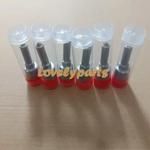Information injection-pump assembly
BOSCH
F 019 Z10 548
f019z10548
ZEXEL
106873-2680
1068732680
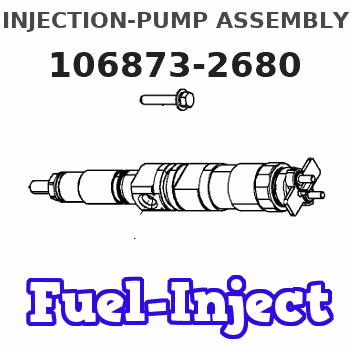
Rating:
Service parts 106873-2680 INJECTION-PUMP ASSEMBLY:
1.
_
7.
COUPLING PLATE
8.
_
9.
_
11.
Nozzle and Holder
12.
Open Pre:MPa(Kqf/cm2)
17.7(180)/24.5(250)
15.
NOZZLE SET
Include in #1:
106873-2680
as INJECTION-PUMP ASSEMBLY
Cross reference number
BOSCH
F 019 Z10 548
f019z10548
ZEXEL
106873-2680
1068732680
Zexel num
Bosch num
Firm num
Name
Calibration Data:
Adjustment conditions
Test oil
1404 Test oil ISO4113 or {SAEJ967d}
1404 Test oil ISO4113 or {SAEJ967d}
Test oil temperature
degC
40
40
45
Nozzle and nozzle holder
105780-8140
Bosch type code
EF8511/9A
Nozzle
105780-0000
Bosch type code
DN12SD12T
Nozzle holder
105780-2080
Bosch type code
EF8511/9
Opening pressure
MPa
17.2
Opening pressure
kgf/cm2
175
Injection pipe
Outer diameter - inner diameter - length (mm) mm 8-3-600
Outer diameter - inner diameter - length (mm) mm 8-3-600
Overflow valve
131424-4620
Overflow valve opening pressure
kPa
255
221
289
Overflow valve opening pressure
kgf/cm2
2.6
2.25
2.95
Tester oil delivery pressure
kPa
157
157
157
Tester oil delivery pressure
kgf/cm2
1.6
1.6
1.6
Direction of rotation (viewed from drive side)
Right R
Right R
Injection timing adjustment
Direction of rotation (viewed from drive side)
Right R
Right R
Injection order
1-2-7-3-
4-5-6-8
Pre-stroke
mm
4.8
4.75
4.85
Beginning of injection position
Governor side NO.1
Governor side NO.1
Difference between angles 1
Cyl.1-2 deg. 45 44.5 45.5
Cyl.1-2 deg. 45 44.5 45.5
Difference between angles 2
Cal 1-7 deg. 90 89.5 90.5
Cal 1-7 deg. 90 89.5 90.5
Difference between angles 3
Cal 1-3 deg. 135 134.5 135.5
Cal 1-3 deg. 135 134.5 135.5
Difference between angles 4
Cal 1-4 deg. 180 179.5 180.5
Cal 1-4 deg. 180 179.5 180.5
Difference between angles 5
Cal 1-5 deg. 225 224.5 225.5
Cal 1-5 deg. 225 224.5 225.5
Difference between angles 6
Cal 1-6 deg. 270 269.5 270.5
Cal 1-6 deg. 270 269.5 270.5
Difference between angles 7
Cal 1-8 deg. 315 314.5 315.5
Cal 1-8 deg. 315 314.5 315.5
Injection quantity adjustment
Adjusting point
-
Rack position
10.4
Pump speed
r/min
650
650
650
Each cylinder's injection qty
mm3/st.
140.4
136.2
144.6
Basic
*
Fixing the rack
*
Standard for adjustment of the maximum variation between cylinders
*
Injection quantity adjustment_02
Adjusting point
C
Rack position
6.8+-0.5
Pump speed
r/min
225
225
225
Each cylinder's injection qty
mm3/st.
19
16.1
21.9
Fixing the rack
*
Standard for adjustment of the maximum variation between cylinders
*
Injection quantity adjustment_03
Adjusting point
A
Rack position
R1(10.4)
Pump speed
r/min
650
650
650
Average injection quantity
mm3/st.
140.4
139.4
141.4
Basic
*
Fixing the lever
*
Injection quantity adjustment_04
Adjusting point
B
Rack position
R1-0.25
Pump speed
r/min
1100
1100
1100
Average injection quantity
mm3/st.
128
126
130
Fixing the lever
*
Injection quantity adjustment_05
Adjusting point
E
Rack position
-
Pump speed
r/min
100
100
100
Average injection quantity
mm3/st.
145
105
185
Fixing the lever
*
Remarks
After startup boost setting
After startup boost setting
Timer adjustment
Pump speed
r/min
900--
Advance angle
deg.
0
0
0
Remarks
Start
Start
Timer adjustment_02
Pump speed
r/min
850
Advance angle
deg.
0.5
Timer adjustment_03
Pump speed
r/min
1100
Advance angle
deg.
4.5
4
5
Remarks
Finish
Finish
Test data Ex:
Governor adjustment
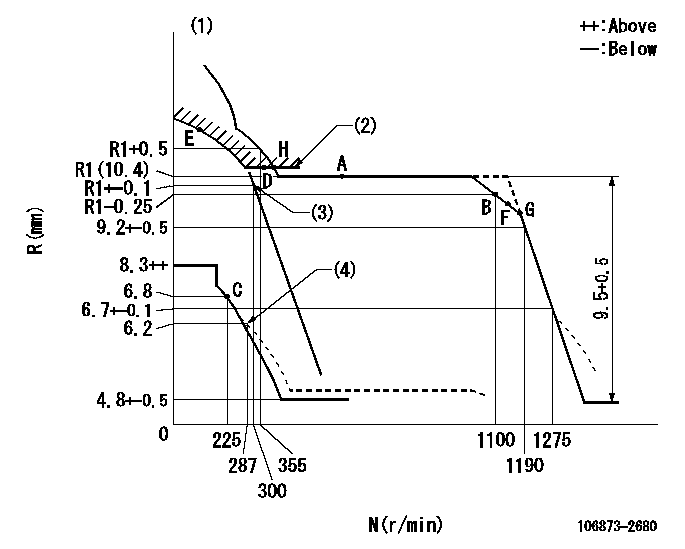
N:Pump speed
R:Rack position (mm)
(1)Tolerance for racks not indicated: +-0.05mm.
(2)Excess fuel setting for starting: SXL
(3)When air cylinder is operating.
(4)Damper spring setting
----------
SXL=10.6+-0.1mm
----------
----------
SXL=10.6+-0.1mm
----------
Speed control lever angle
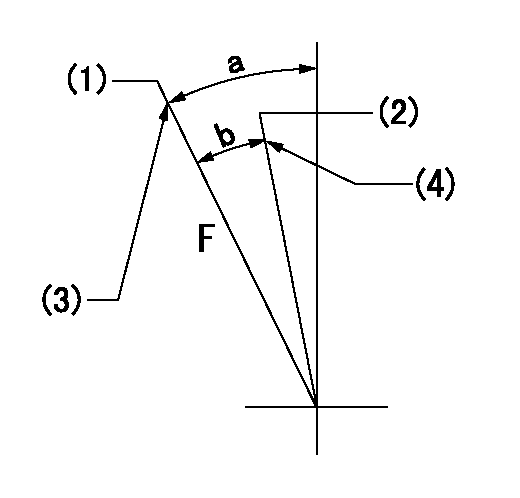
F:Full speed
(1)Set the pump speed at aa
(2)Set the pump speed at bb.
(3)Stopper bolt setting
(4)Stopper bolt setting
----------
aa=1275r/min bb=300r/min
----------
a=(22deg)+-5deg b=(8.5deg)+-5deg
----------
aa=1275r/min bb=300r/min
----------
a=(22deg)+-5deg b=(8.5deg)+-5deg
0000000901

F:Full load
I:Idle
(1)Stopper bolt setting
----------
----------
a=10deg+-5deg b=21deg+-3deg
----------
----------
a=10deg+-5deg b=21deg+-3deg
Stop lever angle
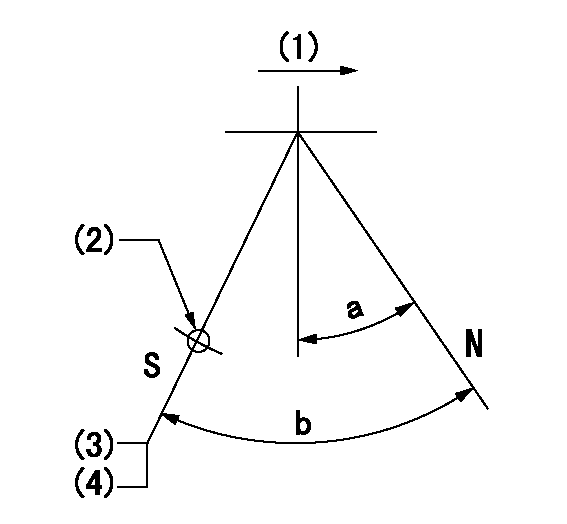
N:Pump normal
S:Stop the pump.
(1)Drive side
(2)Use the hole at R = aa
(3)Rack position bb
(4)Stopper bolt setting
----------
aa=36mm bb=4.3-0.5mm
----------
a=10.5deg+-5deg b=55deg+7deg-5deg
----------
aa=36mm bb=4.3-0.5mm
----------
a=10.5deg+-5deg b=55deg+7deg-5deg
0000001501 MICRO SWITCH
Adjustment of the micro-switch
Adjust the bolt to obtain the following lever position when the micro-switch is ON.
(1)Speed N1
(2)Rack position Ra
----------
N1=325r/min Ra=6.3+-0.1mm
----------
----------
N1=325r/min Ra=6.3+-0.1mm
----------
Timing setting

(1)Pump vertical direction
(2)Coupling's key groove position at No 1 cylinder's beginning of injection
(3)B.T.D.C.: aa
(4)-
----------
aa=12deg
----------
a=(40deg)
----------
aa=12deg
----------
a=(40deg)
Information:
Regular service intervals, along with close daily visual inspection and the adherence to the instructions and schedules, will assure many hours of trouble-free service. If correction steps are taken immediately on discovery of any abnormal condition, fewer forced stops and more economical operation will result.The Lubrication and Maintenance Chart is intended as a guide and adjustments in the schedule may be necessary, depending on conditions under which the engine is operating. A thorough analysis should be made before adjusting the maintenance schedule.Some items to consider in establishing a new schedule are: Severe dust or dirty conditions, fuel consumption (a good measurement to establish intervals as it indicates the amount of work performed). As a guideline, the 3408 Engine with a 12 gal. (45 litre) (10 imp. gal.) capacity crankcase will use approximately 4000 gal. (15,000 litre) (3332 imp. gal.) between oil changes.* The 3412 Engine with a 16 gal. (60.5 litre) (13 imp. gal.) capacity crankcase will use approximately 5100 gal. (19,200 litre) (4248 imp. gal.) between oil changes. *Reducing or extending the maintenance intervals should be done only after complete study and enough time to gain adequate experience to meet specific operations.*With 0.5% or less fuel sulphur content.Caterpillar scheduled oil sampling: Scheduled oil sampling is a program which analyzes oil samples taken from an engine at regular intervals (usually at oil change periods). This oil analysis does not indicate the condition of the oil; but rather, it is a scheduled procedure to determine engine condition at regular intervals by analyzing lubricating oil for foreign and wear particles.The scheduled oil sampling will give the following benefits:It assures the owner that maintenance has been performed.It will show the first signs of excessive wear, meaning a possible upcoming failure, allowing time for a scheduled repair.It will warm maintenance personnel of improper or lack of maintenance and presence of fuel dilution or antifreeze in oil.It is particularly helpful in preventing wear due to dirt entry from air cleaner or inlet piping.Regular sampling is especially advantageous for new engines to establish wear trends from the beginning. The results of the oil analysis are interpreted by experienced, highly trained personnel. Contact your Caterpillar dealer for detailed information.
